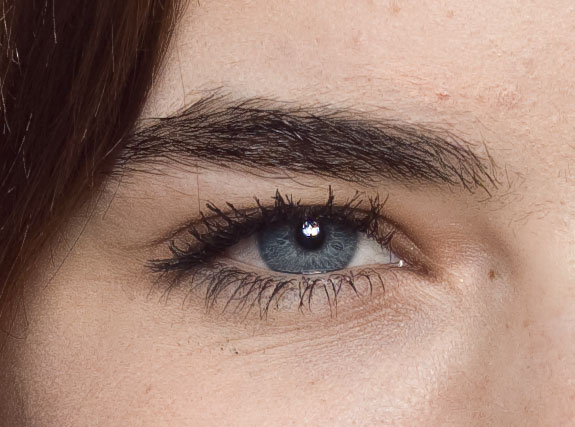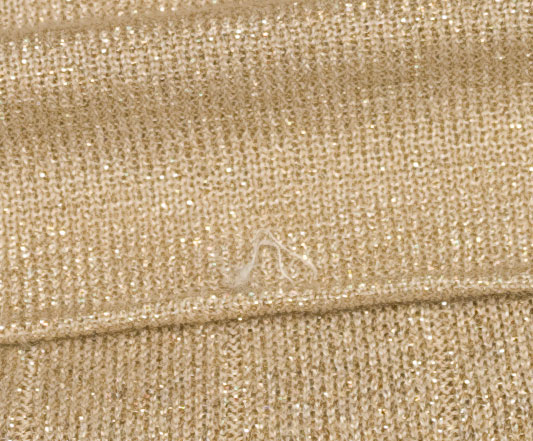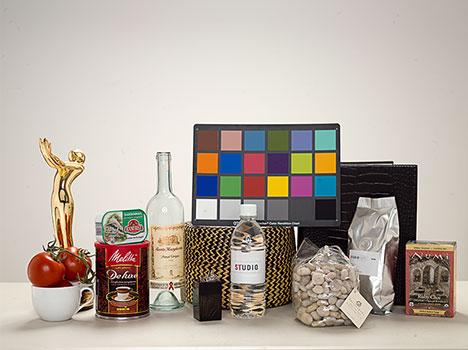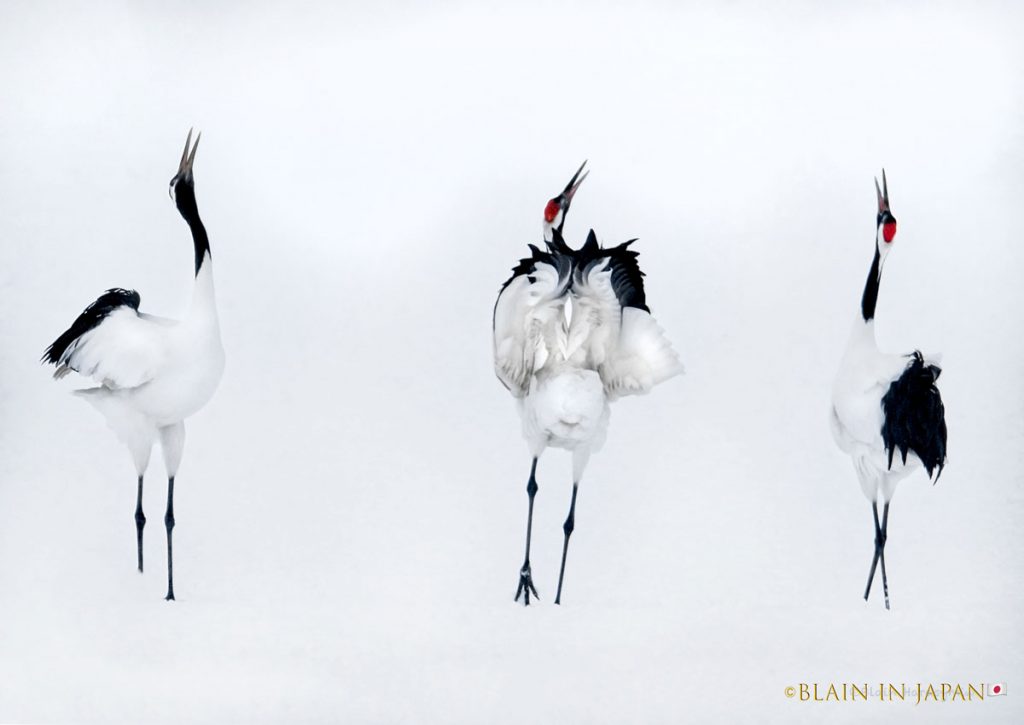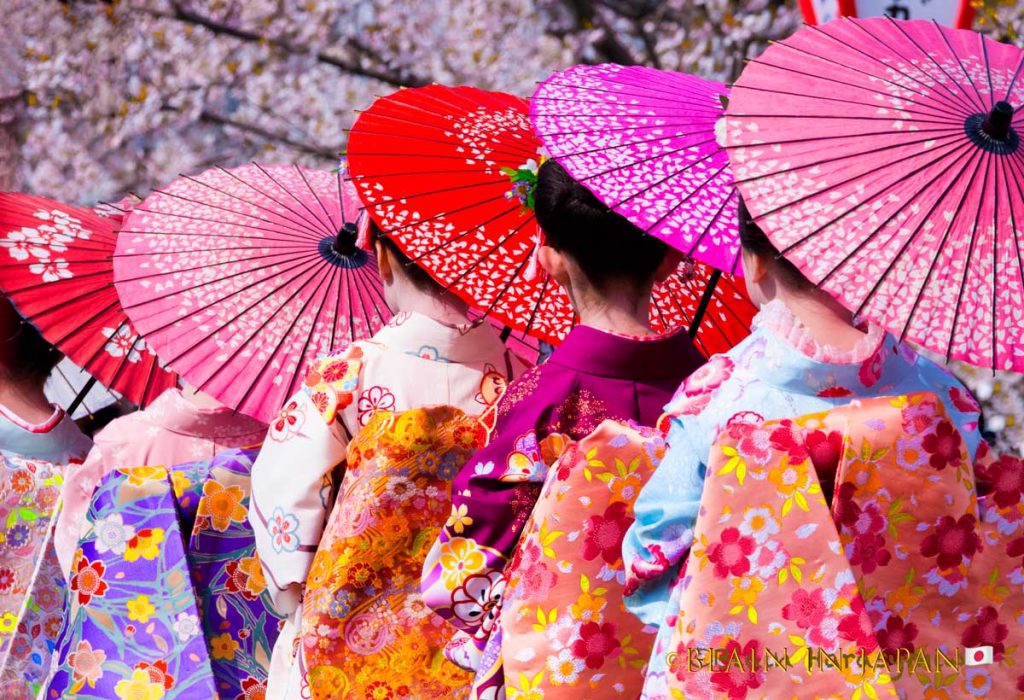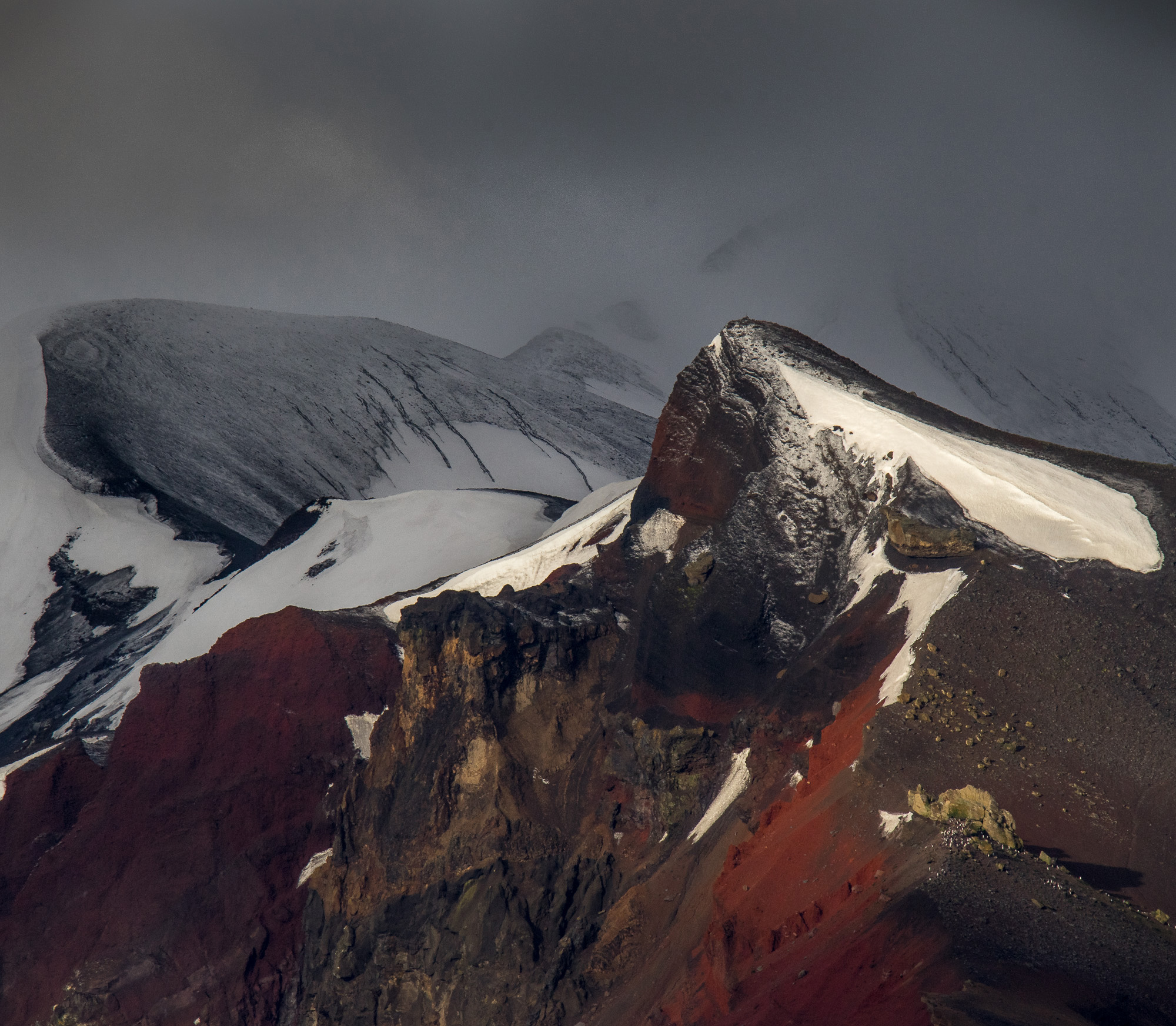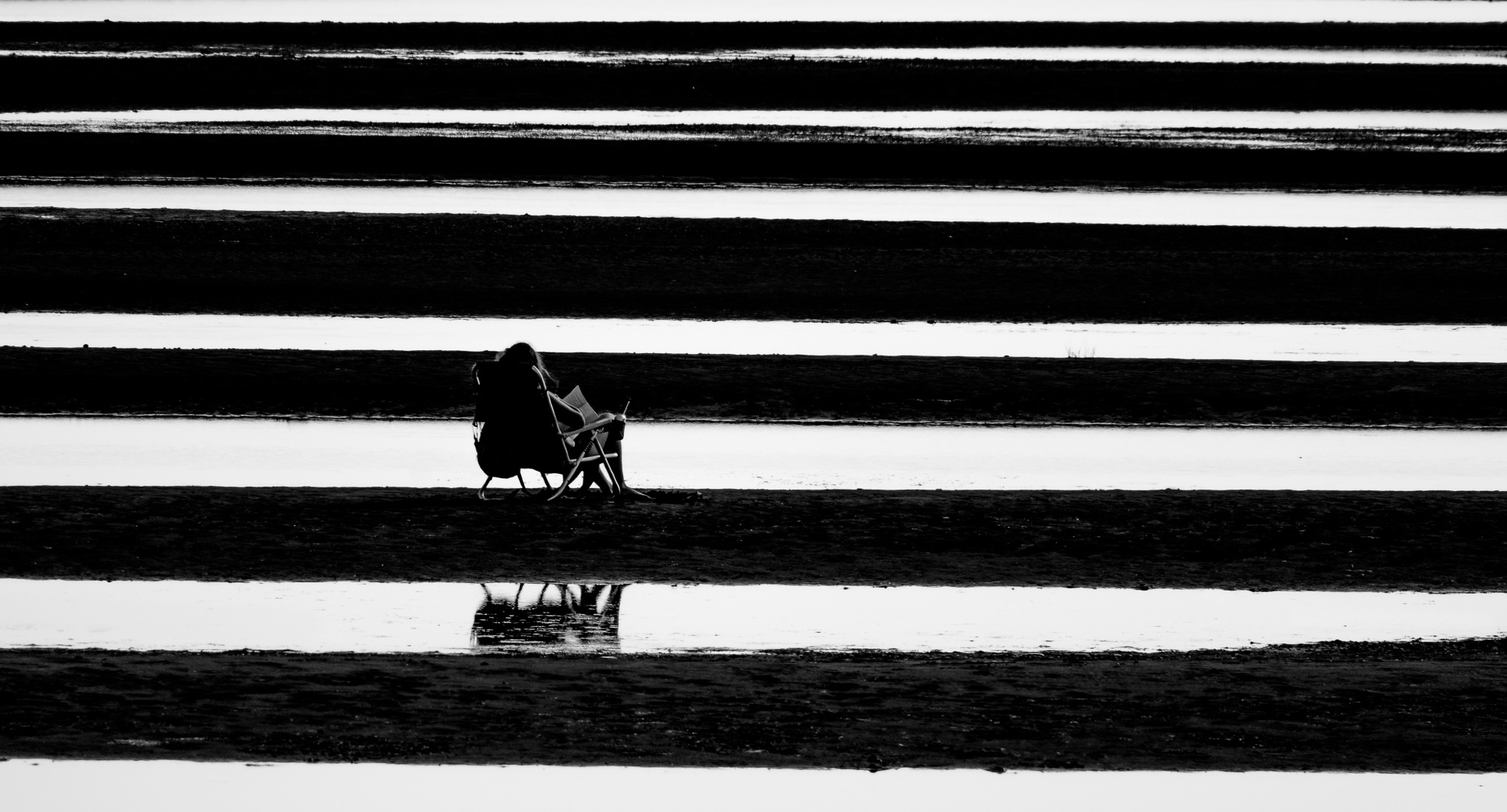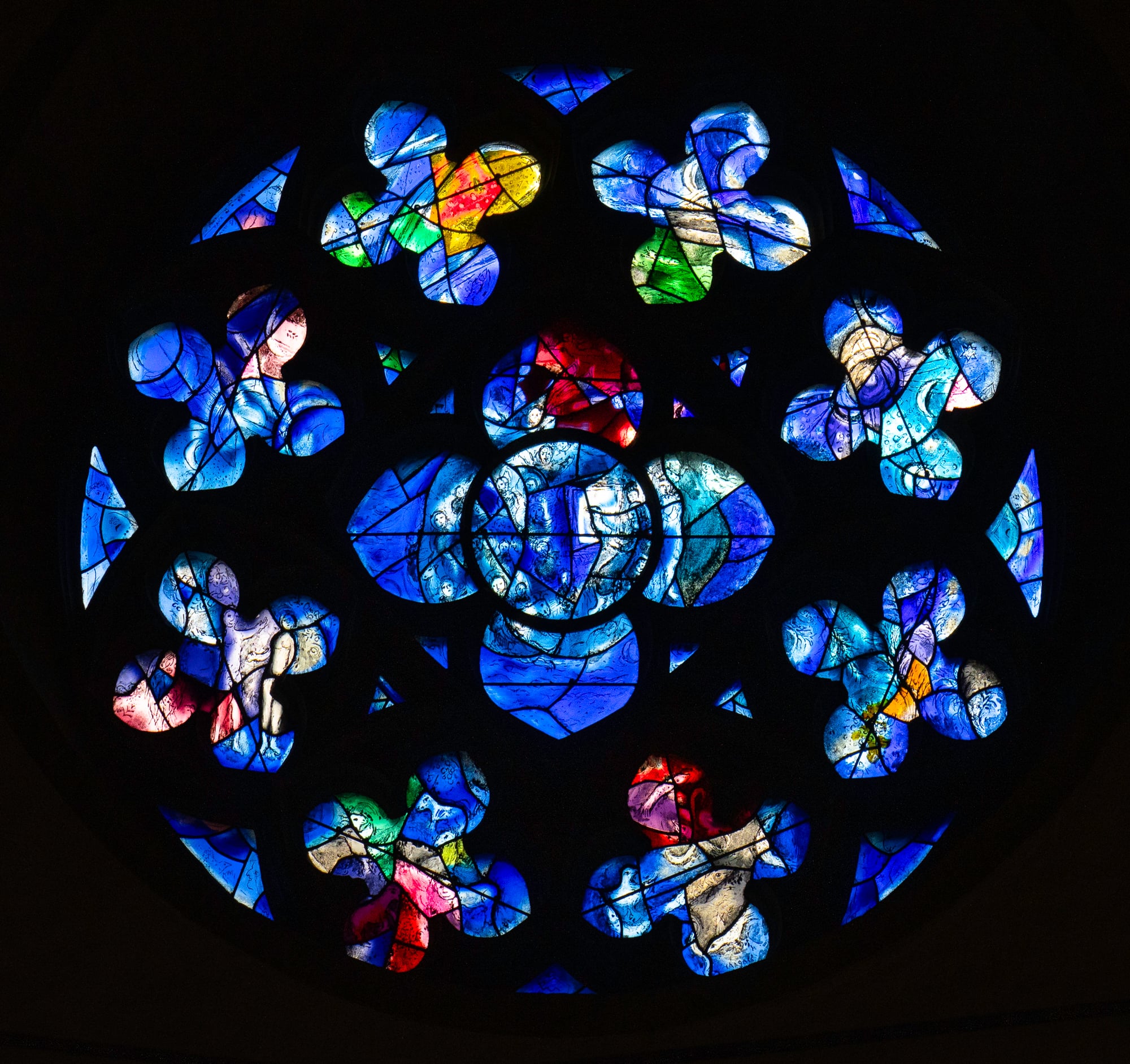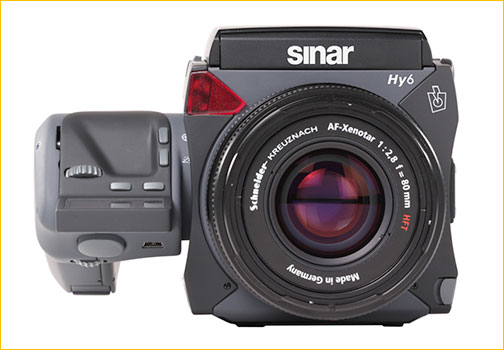
A Bit of History
At the biennial Photokina trade show in Cologne, Germany last October,Franke and Heideckeannounced the Hy6 medium format camera. Simultaneous with this announcement both Sinar and Leaf announced that they would become OEM suppliers of the HY6 under their own brand names, bundled with their own digital backs.
Sidebar:The Hy6 medium format camera system is in fact “owned” by Jenoptik (www.jenoptik-los.com), who commissioned Franke and Heidecke to co-develop and then manufacture their camera. Franke and Heidecke, along with Sinar and Leaf are OEM suppliers of this Jenoptik camera system. Sinar is owned by Jenoptik.
A year has now passed, and Sinar has just started to ship their version of theHy6. I was fortunate to have received a full production test sample of the camera along with Sinar’s 33MPe-Motion 75digital back. Due to heavy demand for this press sample camera I was only able to work with it for a week before returning it to Sinar. This limited the time available for testing, and combine this with a case of bronchitis, jet lag after returning from Madagascar, and three teaching days during that week, and I had nowhere near enough time with the Sinar Hy6.
But, there are no excuses necessary. I was able to work with the camera in the field and the studio and make some initial determinations.

Old Timer Shed. Toronto, November, 2007
Sinar Hy6 with Xenotar 2.8/80 PQS lens and e75 back at ISO 50
Exposure unknown*
The e75 back, especially at ISO 50, is capability of very high image quality.
This example shows an ability to retain both highlight and shadow detail in an
extremely contrasty natural lighting situation.
Franke and Heideckeis the company that made (makes) Rollei cameras. Rollei has a long and illustrious past, and is one of the great names of the camera industry. Prior to the Hy6 their flagship medium format camera was the Rollei 6008. I owned one in the mid-1990s and used it with great pleasure and success for a number of years. The Zeiss and Schneider lenses which were available for it were nothing less than superb, and the camera itself was exceptionally well made and generously featured. I found the ergonomics to be first rate, and though I had been a Hasselblad V series user for decades I found that I preferred the 6008.
But then along came digital, and Rollei got sideswiped. Phase One did make a back for the 6008 for a time, but the brand languished. Rollei was more popular in Europe than North America during the 90s and early part of this decade, but over here their distribution was almost nonexistent. There were few dealers, no rental facilities to speak of, and so it remained a niche product at best.
With the Hy6 F&H seeks to address these issues. While they will be marketing the Hy6 under the Rollei brand themselves, Sinar, and Leaf (their version to be called the Afi) will likely be the primary sources for the camera, each with their own brand name attached.
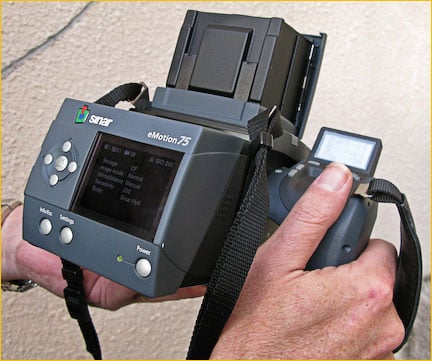
____________________________________________________________________________________
The Package
The Sinar Hy6 arrives in a large Pelican style case. Depending on the configuration purchased there will be a body only or a body plus back and 80mm Schneider Xenotar 80mm f/2.8 AF lens. If you are getting a complete system, that’s how it will arrive in the foam-fitted case, with the camera lens and back already assembled and ready to shoot.
In addition to a variety of expected cables the box arrives with a battery charger and two rechargeable Li-Ion batteries. These are Varta V290 batteries, one for the camera and one for the digital back. Fortunately these are the same and so there’s no confusion possible.
But, the charger only holds and charges one battery at a time. Since the trend in pro cameras these days is to provide a charger that handles two batteries (even when the camera or back only needs one) it is surprising to see only a single battery charger with the Sinar, especially since there are indeed two batteries that need charging.
Pros working on location don’t like surprises, and running out of juice is one of the nastier ones. Clients tend to get a bit miffed when this happens and the light is running out and the clock is ticking on expensive models. My suggestion to Sinar is to source a dual battery charger ASAP, and my suggestion to purchasers is to obtain at least two more chargers at the same time that you purchase a second set of batteries.
Of course I expect the camera battery to last a lot longer than the back battery, but that isn’t really the point. Pros go on a shoot with freshly charged batteries and don’t wait for them to run out on the job. Batteries get charged after every job whether they need it or not. With the Sinar and its single charger for two batteries this means waiting around for the first battery to finish before charging the second one. Not my idea of a good time. Buy a second charger.
Hint:When the back’s battery dies, and you don’t have a spare, swap the back and camera battery. You’ll likely find that the camera’s battery still has quite a bit of juice left, and the back’s battery will probably have enough reserve to keep powering the camera for a while since it is a lower current device than the back.
Also included in the case is a bottle of 96% Ethanol for cleaning the sensor. My suggestion is to ditch the ethanol from the case ASAP if you’re going to ever be shipping it by air. It’s highly volatile and seriously frowned on by airlines.
I’ll have more to say about the back and its accompanyingCaptureshopsoftware a bit further on in this report.
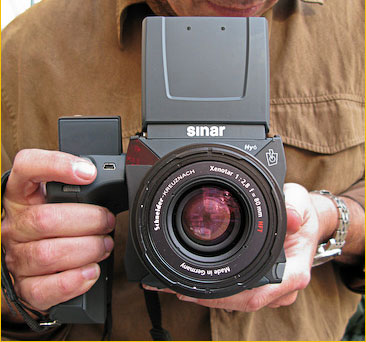
____________________________________________________________________________________
The Camera
The Hy6 is based in part on the Rollei 6008. In fact the lens mount is essentially identical, and all previous manual focus and autofocus lenses for the 6008 will work on the Hy6. Most everything else visible is new, including the viewfinder and back fittings. The 6008 had very good ergonomics, and the Hy6 mostly continues that tradition. We’ll look at the user interface in a moment, but first a word about formats is needed.
The Hy6 is a 6X6 camera (56mm square recording area), not a 645 format camera as is the Hasselblad H series or the Mamiya 645 series. This is a good news / bad news situation. Here’s why.
The good news is that if and when either Kodak or Dalsa is able to manufacture an affordable 56X56mm sensor, the Hy6 will be able to take a back that size. The lenses already cover that format. In fact when shooting 645 one is using the "sweet spot" of these already superb lenses.
The bad news is that to shot with a rectangular sensor back with a typical 36X48mm chip means that if you are going to be shooting with the supplied waist level finder you’ll need to rotate the back on the camera from horizontal to vertical orientation. This means exposing the sensor to the elements, which is not a big deal in the studio, but definitely could be outdoors if the wind is blowing in a sandy environment, or if it’s raining or snowing.
According to Sinar there will an optional revolving adapter which does not require the digital back to be removed from the camera to change the format from landscape to portrait and vice-versa. The adapter will be available in January 2008 at an estimated price of around US $1,500.
There will also be a reflex viewfinder available, which will obviate the need to mount the back in a different orientation. Just turn the camera sideways. But this is not without problems. Hand held is one thing, but when tripod mounted this can be awkward and limiting, making an L bracket highly desirable. If someone likeReally Right Stuffgets around to making an L bracket for the Hy6 the way they do for the Hasselblad H that would be ideal.
Hasselblad please note.Thisis what one calls medium formatfull frame, not the silly marketing hype that was attached to the H3D when launched.
The reflex finder (which I did not get to see or test) is not a prism finder. This again is a good news / bad news scenario. A prism finder that large would be quite large and heavy, not to mention expensive. Consequently Sinar (F&H) is providing an optional reflex finder that is mirror based. While lighter and less expensive (though still not cheap at US $1,750 at today’s exchange rate) the downside of mirror-based reflex viewers is that they tend to be dim. The reflex viewer also won’t be available until some time in early 2008 I’m told. The last time I saw one of these on a medium format camera was on a Mamiya C330 TLR in the mid 1970s.
Note though that the camera’s metering is in the body, not the finder. This means that metering is maintained with any type of finder.
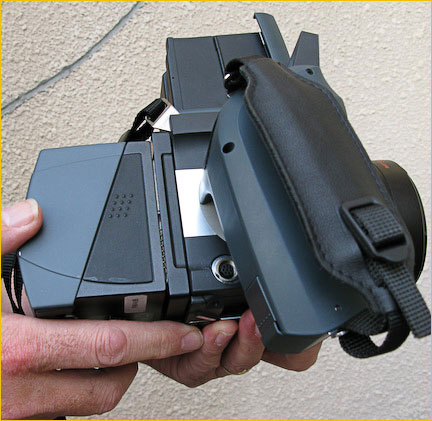
The camera itself is quite light, with a metal chassis, while the grip is molded plastic. The camera’s surfaces are covered with a soft rubbery material that feels good to the hand while providing a sold grip. The left side of the camera contains most of the mode controls while the right side has the shooting controls located on the rotating hand grip. There is an illuminated LCD panel at the leading edge of the grip.
Overall control placement is decent, but the left hand controls – AE mode, metering mode, and AF mode, are set with sliding levers that are recessed into the left side of the body. There are click detents for each position but no lock against accidental movement.
This happened to me quite a lot when shooting in the field, though it won’t happen anywhere near as often in the studio. Just the act of handling the camera as it comes off the shoulder to shooting position was enough to occasionally move one or more of the levers. I feel that some sort of interlock that prevents accidental movement would be an improvement.
I also was concerned with the fact that none of these controls, AE, metering mode, or AF mode are visible from the top of the camera. Since the camera has a waist level finder one is working with it in a low position, even when tripod mounted. To see any of these controls requires turning the camera on its side, which isn’t a big deal when hand-held, but requires moving around to the side of the camera and crouching a bit when it’s tripod mounted.
In fareness it needs to be mentioned that much of the information about these settings is displayed on an LCD above the focusing screen. Here one can read the current aperture and exposure time as well as in what mode the camera is in along with the selected metering mode. The selected focus operating mode can be seen on the grip’s screen.
But overall I have to ask why F&H thought it a good idea to go with quasi-mechnical rather than electronic controls. These are electronic underneath in any event. It lends the camera a "traditional" air, but ultimately I found that their use slowed me down and was prone to error. Simply put, Hasselblad’s centering of all controls around the grip and LCD provides in my view a much more productive and ergonomic interface.

The Hy6 offers a very broad range of advanced operating controls, including exposure bracketing, first and second shutter curtain flash sync, exposure compensation of up to +/- 5 stops in 1/3rd stop increments, and exposure trapping – where the camera fires when a subject enters the preset field of focus. Flash sync is available at all speeds with all lenses as the Sinar Hy6 uses leaf shutter lenses.
Powering the camera on is done with a rotating switch on the camera’s top left edge. There are positions on this switch for single frame and continuous shooting. Turning the camera on isn’t enough though to bring it to life. You also have to touch the shutter release or nothing happens.
This is probably the time to mention that though the camera bears the Sinar name, as does the back, there isn’t as much body / back integration as one might wish. Turning on the camera does not turn on the back, and visa versa. Setting the ISO on the back sets it on the camera, but not the other way round. ISO setting on the camera is disabled when a Sinar back is attached. Curious.
Of course once the reflex finder comes out I expect that most users will opt to purchase and use it as their preferred way of working. Though a waist level finder is useful in some instances, frankly its use is almost archaic in the 21st century, with its laterally reversed ground glass image and low perspective. Suddenly it’s 1950. (The view on the groundglass is very bright though. As good as on any camera I’ve ever seen).
While I realize that the camera is actually made by F&H and just has a Sinar name plate attached, the fact that the companies have a special OEM relationship, and a year or more of working together between announcement and launch, should have lead to a higher degree of integration. Not to put too fine a point on it, but the Hasselblad H3 has almost complete integration between body and back, and even share the same battery. But, let’s continue.
The Sinar Hy6 is, of course, an autofocus camera, and built into the front edge of the body is an IR focusing assist lamp.
It’s quite interesting to take the back off the Hy6 and press the shutter release. The speed is amazing – about 3 FPS. If the day comes that medium format backs can write that quickly, and physically larger sensors also become available, the Hy6 will be ready.
One final note on the body. If you open the battery hatch on the grip and look inside you’ll see an exposed circuit board at the rear. This is of concern because changing the camera’s battery in the field is something that photographers are likely to do fairly often. To have an exposed circuit board in a body opening that is regularly going to be open to the elements, even briefly, seems to me to be a design oversight.
____________________________________________________________________________________
In Hand
The Hy6 falls to hand very nicely. It feels good, and for the most part handles smoothly. The rotating grip allows the LCD panel to be seen regardless of the position of the camera, and the switch that controls rotation of the grip is well placed and positive in its action. The LCD is bright and contrasty and easily visible in every lighting condition. The information presented is clear and comprehensive.
There is a dedicated aperture stop-down button as well as a dedicated mirror lock up button (Canon, please note – this is the way professional cameras should be designed). There are two programmable soft keys on the grip as well, and a thumb wheel on top in addition to a forefinger wheel just below the shutter release. All in all, little to fault and lots to like.
The camera comes with an installed palm strap making walking around with the camera in hand safe and comfortable. A neck strap is also provided and it attaches securely yet can easily be removed during studio use.
I did note though that when the grip is rotated to a fully vertical position, which is how it would be used with the reflex finder, the camera no longer can sit flat on a level surface. This is because the grip projects downwards below the bottom of the camera. This may also become an issue with some tripods that have pan and tilt arms jutting out.
____________________________________________________________________________________
The Back
This report is primarily about the Sinar Hy6 camera, but since it likely will be sold with one of Sinar’s backs the vast majority of the time, I’ll comment with some initial impressions about the eMotion 75 back as well.
This is my first exposure (pardon the pun) to an eMotion back. You may recall that Sinar is owned by Jenoptic, and Jenoptic used to sell a line of digital backs under the brand name Eyelike. The eMotion line is derived from this lineage.
The back which came with my sample Hy6, the eMotion 75, is Sinar’s current top-of-the-line. It is a 33MP back using a Dalsa sensor. It attaches to the Sinar Hy6 via an adaptor plate, which is provided, and which is seen in the illustration below.

The back is fairly large, deeper than other backs with which I am familiar. The battery and CF card live behind a door on the left side of the back, and herein lies one of the first problems which I encountered. The battery is secured inside the body with a release latch. But, I found on several occasions that I would go to turn the back on and nothing would happen. What I found is that the release latch for the battery had sprung, but because the battery is behind a closed door, the fact that it was not secured and making contact wasn’t visible. Since the latch appears to be properly functioning I can only see this as a small design flaw. (The camera did bounce around on the car’s seat driving over some rough roads, but that type of handling is normal for a working tool).
I also was concerned about that fact that the battery lives inside the back. While this makes for a tidy if somewhat larger package, heat is the enemy of digital, and batteries get hot when in constant use. Other back makers therefore place their batteries on the outside of the back, side or bottom, or power the back from the camera. I have not run any tests of whether or not this is a real world issue, but it is something to consider. There is no built-in fan in the back.
The back’s screen is out of the same mold as the one that Phase One used to have on their pre-Plus series backs. In other words, small, dim and coarse. Screens on digital cameras have come a long way in the past year or so. They are now larger, quite bright, and easily read in almost any ambient light condition. Sinar’s primary competitors, Leaf, Phase One, and Hasselblad all have much bigger and brighter screens, and so I would expect that this is one area where Sinar needs to update their product line, sooner rather than later.
I also wasn’t that impressed with the back’s control interface. While Leaf, for example, has a gorgeous large touch screen with controls for everything but launching the Space Shuttle, and Phase One has a back control system that is simpler, but very quick and intuitive to use, the eMotion’s controls are what I can only describe as clunky.
There are also some vital bits missing. For example, it is not possible to display an image after exposure on the back’s screen showing the aperture and shutter speed used. A histogram is available, and the ISO used is displayed, but not the f stop and shutter speed used to take the exposure. I find this to be an almost inexcusable omission, and a surprising one since Sinar and F&H have been working together for over a year on the system.
And, though I’m getting ahead of myself, in Sinar’s Captureshop there is also no way to display this information. It simply isn’t being communicated from the camera to the back. I was so puzzled by this that I double checked with Sinar to see what I might be missing, but this is in fact the case. Very, very strange.
____________________________________________________________________________________
Captureshop
I won’t say much about the provided Captureshop as I didn’t spend much time with it. I found it to be a very simple program lacking in many of the advanced raw processing features that we have become used to over the past few years, as exemplified by Apple’sApertureand Adobe’sCamera RawandLightroom.
I was consequently very pleased to find out that a gentleman named Stephen Hess (with the assistance of Architectural photographer Rainer Viertlböck) has produced a very nice utility program calledeMotionDngthat will convert Sinar’s proprietary raw format into DNG. This is a free utility and works very quickly and efficiently. This means that you can use the raw conversion and processing program of your choice, which in my case is Adobe’s Lightroom.
Note that Captureshop and eMotionDng are Mac OS X programs. There is no Windows software for the Sinar eMotion backs. Windows users might take this as an opportunity to purchase one of the new Intel Macs which can run their legacy Windows programs using either Bootcamp or Parallels. In any event, Windows users who do not have access to a Mac will not be able to work with the eMotion back in tethered mode, or at all with Sinar’s raw files unless they can get someone with a Mac to convert them to DNG.
I was told by Sinar that they have a new program under development calledeXposurewhich will be available for Windows as well as the Mac OS. No information yet on features or availability.
____________________________________________________________________________________
Lenses and Prices
The Hy6 camera with 80mm lens and e75 back is priced at around US $35,000. The camera with the e54 back will be $25,900. The reflex viewfinder will be approximately $1,750.
When the anticipated lens line is complete it will include 35, 50, 80; macro 120, 150, 180; and a 60-140 mm zoom. All Rolleiflex 6008 compatible AF and non-AF lenses can be used with the Hy6 System. The prices of currently or soon to be available lenses are…
Schneider AFD S-Angulon 2.8/50 HFT PQS – $4,900
Schneider AFD Xenotar 2.8/80 PQS – $2,800
Schneider AFD Xenotar 4/150 HFT PQS – $3,650
Schneider AFD Tele-Xenar 2.8/180 PQ – $5,500
Schneider AFD Variogon 4.6/60-140 PQS – $6,700
These are manufacturer’s suggested prices and will of course vary by country and as international exchange rates fluctuate. Local distributors and dealers are free to charge what they wish, and careful shopping will likely turn up better prices than these.
____________________________________________________________________________________
Image Quality
This was intended as a report on the Sinar Hy6 camera, but as mentioned, since the camera will likely be sold with a back, and an eMotion 75 back was provided for testing, I did some evaluation of the back as well.
With regard to image quality, the e75 performed very well. My testing wasn’t rigorous or extensive, but I shot with it both outdoors in natural light and in the studio with flash.
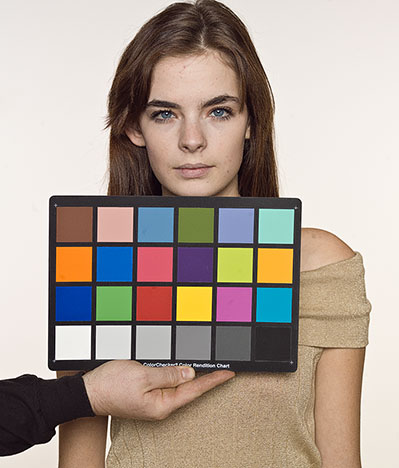
Model and Macbeth Color Checker
Sinar Hy6 with Xenotar 2.8/80 PQS lens and e75 back at ISO 100
Exposure unknown*
Colour accuracy seems to be very high. No spectro measurements were taken
but visually the Macbeth Color Checker shows excellent colour reproduction.
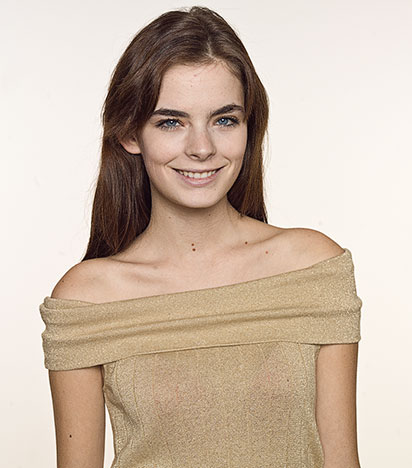
Frame 36 : Skin Tone and Moire
Sinar Hy6 with Xenotar 2.8/80 PQS lens and e75 back at ISO 100
Exposure unknown*
When it comes to resolving power neither the Schneider lens nor the Sinar e75 back can be faulted.
First class performance.
I saw no moire in this or other studio shots with fabric,
though it would take much more testing that I had time for to draw
any firm conclusions about this aspect of the back’s performance.
Sinar Hy6 with Xenotar 2.8/80 PQS lens and e75 back at ISO 50
Exposure unknown*
As part of a larger comparison test done at Studio One in Toronto, we compared the Sinar Hy6 with e75, a Canon 1Ds MKIII, Canon 1Ds MKII, a Hasselblad H2 with Phase One P45+, and a Hasselblad H3D-39 II. That test will appear on the site in the days ahead.
The test included both a model shoot and still life set ups, both of which are seen here. (Ignore the vignetting of the background on the still life – it was caused by the lighting, not the lens, and wasn’t part of the test).
We did the same set-up with the Hy6 at ISO 50, 100, 200 and 400. The full frame is seen above. below are crops that show the performance at each of the sensitivity settings.




As can be seen, even in these web crops, high ISO performance is very good, as good as I’ve seen from any other digital back, especially at ISO 400.
____________________________________________________________________________________
Pros and Cons
A camera such as the Sinar H6 is not going to be bought by the typical amateur photographer. What I call theFerrari Syndromemay be in effect – that is, a desire to read about it, and debate the pros and cons on web forums, but not an ability to actually purchase. The reality is that the natural constituency for a camera and back such as this is primarily the professional photographer, and to a lesser extent very well-heeled fine art "prosumers". In either case, the buyer will be experienced and knowledable not only about equipment in general but their specific needs in particular. They are going to be buying a tool for making their living or pursuing their art, not a life-style toy.
Till recently this market segment has seen nothing but contraction during the past decade with the demise of Bronica and Contax as well as numerous smaller brands. The closing of the Hasselblad system to third party backs is cause for concern for many, and the encroachment into MF territory by the likes of the Canon 1Ds MKIII offers a shot across the bow to the hegemony of smaller manufacturers.
For these reasons the appearance of a new medium format platform in the form of the Hy6 is very welcome, particularly because it is designed as an open platform and with an eye toward the future. The fact that there are two companies selling the camera (Sinar and Leaf) under their own brands, and that it will also be available as a stand alone camera under the Rolleiflex name, is all to the good. The ability for the camera to shoot as fast as 3 FPS has an eye toward the future, and offering a full 6X6 format means again that there is a window into the future of possibly larger and less costly sensor technology.
So for all of these reasons it is necessary to not wear rose coloured glass when evaluating the Hy6, and especially the Sinar Hy6 as a combination of camera and back because this is the way that many prospective buyers will approach the new camera.
Here then is a summary of the more significant pros and cons, at least as I figure it.
The Camera
Pros
– A new MF platform for the medium format community
– Open system with back and supplier choices
– Good build quality. Light weight
– Backward compatibility with Rollei 6008 lenses
– Access to first rate Schneider optics
– High frame rates possible, only limited by back technology
– 56mm X 56mm frame size able to support larger future sensor sizes
Cons
– Late availability of reflex viewfinder. Mirror based not prism
– No lock on manual side controls
– Exposed circuit board inside grip
– Single battery charger
The Back
Pros
– Very good image quality
Cons
– Small and dim LCD screen
– Poor interface between back and camera. No exposure data exchanged
– Battery inside back… potential heat issues and insecure latch
____________________________________________________________________________________
Conclusion
If you are in the market for a new medium format camera system and digital back then you’re going to be spending a great deal of money, possibly close to $40,000 with lenses and accessories. This is a significant purchase and you should naturally make it carefully.
The Sinar Hy6 is a very worthy addition to the industry and would be a fine addition to anyone’s equipment arsenal. But Is it the right camera for you? Only you can make that determination. There are several things which I have criticized on this page, but there’s also quite a lot to like. My recommendation is that you visit a local dealer and run your own tests. At this price point you will be buying from a VAR who will be pleased to come and visit your studio and to provide a demonstration, maybe even a loaner for a day or two.
As mentioned earlier on this page, don’t just buy on price, or even features for that matter. This is a productivity tool and therefore it’s only going to be worth having if it makes and keeps you productive. What is the dealer’s repair policy and turn-around time? What is the upgrade policy? Are rental units available?
These are some of the questions that need to be asked when buying a high-end medium format system.
Don’t buy or not buy based on any one review. Your needs may different from mine, and things which I consider important may not be the ones that concern you. Get a demo. Run your own tests. Do comparisons. Be a smart shopper.
November, 2007
____________________________________________________________________________________
Postscript
Be Careful What You Wish For
At the last Photokina in October, 2006, three momentous announcements were made in the medium format marketplace. The first was that the new Hasselblad H3D would no longer accept backs from other makers. There were salesman and executives in the Hasselblad booth on the first day of the show that were also saying that the H2 would be discontinued. This was officially denied by the company on day two of the show, but did in fact come to pass just a year later.
The second announcement of import was that Franke and Heidecke would be introducing the Hy6 camera, and that both Sinar and Leaf would be OEMing it under their own brand names.
The third announcement, which wasn’t made widely public, but which was made to the Phase One dealer conference just prior to Photokina, and subsequently known to folks in the industry, was that Phase One had entered into a strategic alliance with Mamiya. This was subsequently publicly announced last month with the word of a new Phase One designed / Mamiya built medium format camera to come in the first quarter of 2008.
Don’t think that it was any coincidence that these three things all happened on the same day in October 2006. Clearly Hasselblads decision to close the H platform to other maker’s backs was well known (or at least anticipated) by Sinar, Leaf and Phase One well before it was made public. It’s my guess that Franke & Heidecke would likely not have been able to get Sinar and Leaf onboard the Hy6 program as quickly as they did if those two companies did not anticipate the closing of the H platform. Similarly Phase One would not have had Mamiya executives on stage at their pre-Photokina dealer conference if the H Hasselblad would have continued to provide a platform for them to sell their backs, and for photographers to mount then on.
No. Anticipating, or with actual knowledge that they would not longer be able to sell backs to fit on the market’s leading platform, the H series Hasselblad, Sinar, Leaf and Phase One did what they had to – find alternative camera platforms. What should they have done? Said –Oh well, no more places to put our backs. Guess we’ll just curl up in a corner and die.
So in the end, and likely faster than they thought it would happen, Hasselblad found that while they no longer had to compete with Sinar, Leaf and Phase One in selling digital backs to go on their cameras, they now had two new camera to compete with AND no more third party backs to generate camera body and lens sales for them.
I thought that this was a dumb move on Hasselblad management’s part then, and said so, and believe this to be the case even more so now. So, as the saying goes –Be careful what you wish for. You might just get it.
Read this story and all the best stories on The Luminous Landscape
The author has made this story available to Luminous Landscape members only. Upgrade to get instant access to this story and other benefits available only to members.
Why choose us?
Luminous-Landscape is a membership site. Our website contains over 5300 articles on almost every topic, camera, lens and printer you can imagine. Our membership model is simple, just $2 a month ($24.00 USD a year). This $24 gains you access to a wealth of information including all our past and future video tutorials on such topics as Lightroom, Capture One, Printing, file management and dozens of interviews and travel videos.
- New Articles every few days
- All original content found nowhere else on the web
- No Pop Up Google Sense ads – Our advertisers are photo related
- Download/stream video to any device
- NEW videos monthly
- Top well-known photographer contributors
- Posts from industry leaders
- Speciality Photography Workshops
- Mobile device scalable
- Exclusive video interviews
- Special vendor offers for members
- Hands On Product reviews
- FREE – User Forum. One of the most read user forums on the internet
- Access to our community Buy and Sell pages; for members only.






